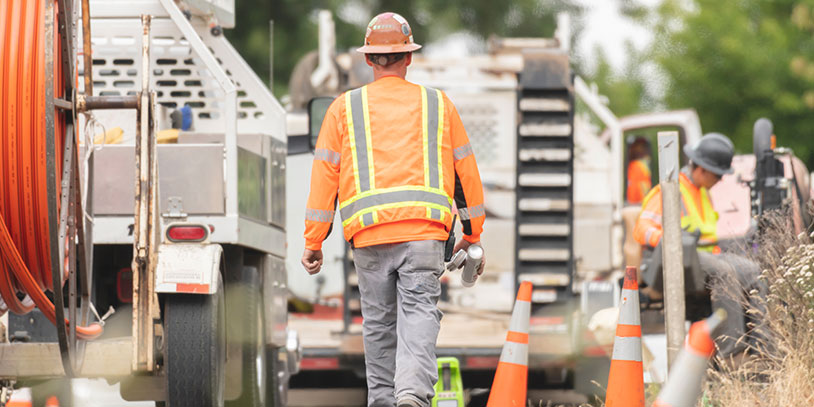Ground-Penetrating Radar vs. Electromagnetic Locating Technology

It is the responsibility of a utility locator to locate, identify, and mark underground utilities before any digging, construction, or other projects occur in an area. The day-to-day obligations of a professional utility locator are far more complex than placing flags in the ground or using spray paint to mark the presence of underground utilities. Utility locating requires the use of advanced observational skills, expert-level deductive reasoning, and troubleshooting mastery. To excel as a skillful locator, one must also be well-versed on the different equipment and technologies available to them.
Attention to detail and accuracy are the most crucial components of the underground utility locating process, as the consequences of an imprecise or incomplete locate can be a matter of life-and-death importance. When the stakes are this high, it is critical to be both familiar with and confident in the equipment being used. The environment that locating is being performed in, soil conditions, and the type of line being located are all significant factors to be considered when selecting the most fitting locating equipment for the job. Currently, the most widely used forms of locating technology are ground-penetrating radar and electromagnetic tracing.
Utility locating equipment has been in existence for decades but has become significantly more widely used in recent years. This rise in popularity can be traced back to several factors including increased volume of underground utilities and an increased number of user-friendly, intuitive locating devices available. The use of electromagnetic tracing technology has remained the most prevalent method by far. Electromagnetic tracing (EM) is used to locate underground utility lines that hold a current. EM locators are known to perform well in a wide variety of soil types and conditions and are faster as well as more affordable than ground-penetrating radar (GPR) locators. This method of locating can be relied on in instances where the utility being located is conductive or buried with conductive tracing wires, as EM locators require the transmission of a signal.
GPR locating technology is a newer approach to utility locating that has been steadily rising in popularity. While GPR locators are more expensive than EM locators, GPR locators do vary in price. Basic GPR locators are available for a lower cost than the more sophisticated GPR locators that offer the most features. GPR locating is a more time-consuming approach than EM locating, but the technology is still growing, evolving, and becoming faster. The main benefit of GPR is the ability to locate anything that has a contrast with the soil it is embedded in, whether the material can hold a current or not. GPR is an excellent option for any locating job where a proper signal cannot be gained using the EM approach.
GPR and EM locating technology both add unique value to the world of underground utility locating. Whether utilizing either form of technology, locators must remain familiar with both the benefits and potential disadvantages of the equipment being used. The effectiveness of either approach can be extremely site-specific. The utility being located, conditions on the ground, type of soil, depth readings, frequencies, and potential interference are all factors a locator must keep in mind when selecting the most-fitting equipment for the job. While GPR and EM technology both add tremendous value to the utility locating process, no technology can match the significance of a dedicated and meticulous utility locating professional.
About KorTerra, Inc.
KorTerra is the leading provider of damage prevention software, protecting billions of dollars in underground infrastructure. For over 30 years, the leading stakeholders in gas distribution, pipeline operation, telecommunications, electric distribution, contract locating, and city, county, and state governments have trusted KorTerra as their damage prevention solution. KorTerra helps mitigate risk and ensure the safety of field personnel by providing secure software platforms for processing 811 locate tickets, tracking and reporting asset damages, meeting regulatory compliance, and more. Explore additional solutions at korterra.com and follow KorTerra on LinkedIn.
Media Contact:
Paige Nygaard – KorTerra, Inc.
952.368.1911
marketing@korterra.com





